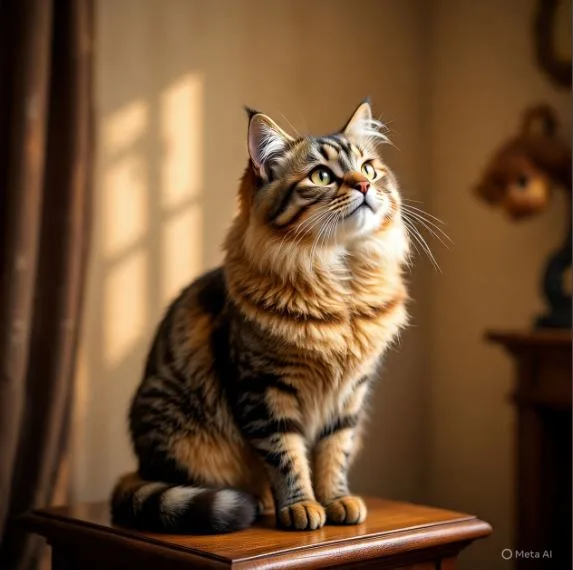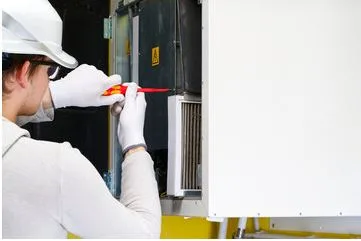Is Pet Taxidermy a Good Option for Memorializing Your Pet?
Losing a beloved pet is an incredibly personal and emotional experience. For many, pets are more than just animals—they’re family, companions, confidants, and loyal friends. So when the time comes to say goodbye, it’s only natural to seek a way to honor that bond in a meaningful, lasting way.
Some pet owners turn to traditional forms of memorialization: cremation, urns, engraved plaques, or photo albums. But for those seeking a tangible, physical connection with their pet, there’s another, more unique path—pet taxidermy.
While the idea of taxidermy often brings to mind mounted wildlife trophies, pet taxidermy is an entirely different practice. It’s delicate, deeply intentional, and rooted in a desire to preserve not just an animal’s appearance, but the emotional presence they held in your life. But is it the right choice for everyone?
In this blog, we’ll explore the benefits of pet taxidermy, how the process works, who it’s best suited for, and the important considerations to keep in mind when deciding if it’s the right option for you.
Understanding Pet Taxidermy: What It Really Is
Pet taxidermy is the art of preserving your pet’s physical likeness through professional mounting and sculpting. The goal isn’t just to replicate their form—it’s to capture their personality, their natural pose, and that familiar expression you knew so well.
Unlike traditional wildlife taxidermy, which often features static, lifeless stances, pet taxidermy is rooted in realism and emotion. Skilled taxidermists work closely with pet owners to understand the pet’s character, quirks, and typical posture to create a respectful and comforting representation.
Depending on your preferences, pets can be posed sitting on their favorite blanket, curled up in a resting position, or standing with alert ears and bright eyes—offering the feeling that they’ve never truly left your side.
Who Is Pet Taxidermy Right For?
While pet taxidermy may not be for everyone, it’s a deeply personal choice that resonates strongly with many pet owners—especially those who feel comfort in being close to their pet in a physical way.
You might find pet taxidermy to be a good fit if:
- You want a lifelike reminder of your pet that offers a sense of presence.
- You’re not emotionally connected to cremation or burial as a memorial method.
- You value the idea of keeping your pet close by in a tangible, visible form.
- You appreciate or are open to artistic preservation techniques.
- You’re seeking a one-of-a-kind tribute that’s both personal and permanent.
For some, the idea of pet taxidermy may initially feel unusual or even unsettling. But for others, it’s a beautiful way to preserve their pet’s memory in a way that traditional methods don’t offer.
The Benefits of Pet Taxidermy
When thoughtfully executed, the benefits of pet taxidermy can be significant—especially for pet owners who view their animals as lifelong companions deserving of a unique tribute.
Here are a few key benefits:
1. A Tangible Connection to Your Pet
One of the most meaningful benefits of pet taxidermy is the tangible presence it offers. Instead of fading photos or a sealed urn, you’re left with a three-dimensional representation that evokes strong memories. Many owners say that being able to physically see and touch their preserved pet provides ongoing comfort and closure.
2. A Lasting Memorial That Doesn’t Fade Over Time
Unlike some other forms of memorialization, taxidermy is designed to last for decades with proper care. Your pet’s likeness won’t yellow, crumble, or degrade the way fur clippings or fabric-based keepsakes might. It’s a permanent tribute that can be passed down or displayed for years to come.
3. Customization and Personalization
No two pets are alike—and no two taxidermy pieces are either. From choosing your pet’s pose and facial expression to selecting props or resting spots (like their favorite bed or toy), you have full control over the final outcome. This makes the process incredibly personal and tailored to your pet’s unique personality.
4. A Healing Part of the Grieving Process
For many, the act of deciding how to memorialize a pet is part of the grieving journey. Pet taxidermy offers an active, creative way to honor that relationship. Choosing a pose, sharing stories with the taxidermist, and helping shape the final tribute can offer a sense of peace and purpose after loss.
5. An Artistic Legacy
Beyond memorialization, pet taxidermy is a form of art. The best taxidermists are part artist, part anatomist, and part storyteller. The result is a beautiful, hand-crafted piece that doesn’t just replicate your pet—it captures their soul.
How the Pet Taxidermy Process Works
If you’re considering this option, it helps to understand the steps involved in the process. It’s not something that can be rushed—great taxidermy takes time, skill, and a collaborative spirit between the pet owner and the professional.
1. Initial Consultation and Planning
Once you’ve contacted a taxidermist, the first step is a conversation. You’ll discuss your pet’s personality, typical expressions or habits, preferred poses, and your vision for how you’d like them preserved. Photographs are essential—preferably from multiple angles—to capture details like fur texture, markings, eye shape, and facial expressions.
2. Proper Preservation (Timing is Crucial)
It’s essential to freeze your pet’s body as soon as possible after passing if you’re planning on taxidermy. This prevents decomposition and preserves the physical form for accurate mounting. Most reputable taxidermists can walk you through the proper steps or work with a veterinarian or pet preservation service to ensure respectful handling.
3. Sculpting, Mounting, and Finishing
Once your pet’s body is prepared, the artist will begin creating a custom mold or mannequin, preserving the hide and meticulously recreating the animal’s form. Glass eyes are selected, expressions are carefully shaped, and fur is cleaned and groomed to resemble how your pet looked in life. This process can take anywhere from a few months to over a year, depending on complexity and backlog.
4. Final Reveal and Display Options
Once complete, you’ll receive a call for the final reveal. The finished piece can be displayed in your home on a base, in a custom case, or integrated into a pet shrine with other memorabilia like collars, tags, and photos.
Questions to Ask Before Committing
Because pet taxidermy is so personal—and irreversible—it’s important to feel fully informed before deciding. Here are a few questions to ask yourself and your taxidermist:
- Am I emotionally comfortable with this form of memorialization?
- Do I understand how my pet will be handled and preserved?
- Have I seen examples of the taxidermist’s previous work?
- What will the finished product look and feel like?
- How long will it take, and what is the cost?
- What kind of ongoing care or maintenance is required?
Trust is key. Always work with a professional who specializes in pet taxidermy and has positive reviews or a portfolio of lifelike work. This ensures the experience is respectful, compassionate, and worthy of your pet’s memory.
Alternatives That Blend Taxidermy with Other Memorials
If you love the idea of a physical tribute but feel unsure about full taxidermy, there are hybrid options available that offer some of the benefits of pet taxidermy without the full mounting process. These include:
- Freeze-dried preservation: An alternative that uses low temperatures to preserve your pet’s body in a natural state.
- Partial preservation: Some owners choose to preserve just the head, paws, or tail as keepsakes.
- Replica sculpting: Artists can create soft-sculpture or resin replicas based on your pet’s exact features.
- Memorial shadow boxes: Combine fur clippings, paw prints, and collar tags with a professional photo and custom plaque.
These options allow for personalization and tactility while offering a gentler emotional approach for some owners.
The Emotional Side of Pet Taxidermy
Choosing to preserve your pet through taxidermy is a powerful, emotional decision. Some owners report feelings of peace, comfort, and joy when they see their pet lovingly preserved. Others may feel sadness, hesitation, or find it emotionally overwhelming to keep their pet in visual form.
It’s important to follow your instincts. Talk openly with friends, family, or even a grief counselor about how this form of memorialization fits into your personal grieving process. Everyone’s journey is different, and there is no “right” way to honor your pet—only the way that feels right to you.
Is Pet Taxidermy the Right Choice for You?
Pet taxidermy is not about holding on to the past in a morbid way—it’s about celebrating a life that meant everything to you. It’s a tribute to loyalty, companionship, and unconditional love. For some, it brings a sense of closure and comfort. For others, it creates a lasting legacy and connection.
The benefits of pet taxidermy are many—from emotional healing and tangible presence to the artistry and permanence of the final tribute. But it’s a personal path, and it’s important to move forward only if it truly aligns with your heart.
Whether you choose full taxidermy, a smaller keepsake, or another form of memorial, your pet’s memory deserves to be honored in a way that feels meaningful to you. Grief has no timeline, and love never really leaves us—it just evolves into something we carry in a new way.
If you’re considering pet taxidermy as a way to honor your companion, take your time, ask questions, and work with a taxidermist who understands not just the technical side, but the emotional side of this deeply special process.
Would you like help finding a qualified, compassionate pet taxidermist near you or have more questions about preservation options? Let us know—we’d be honored to help guide you during this important decision.






